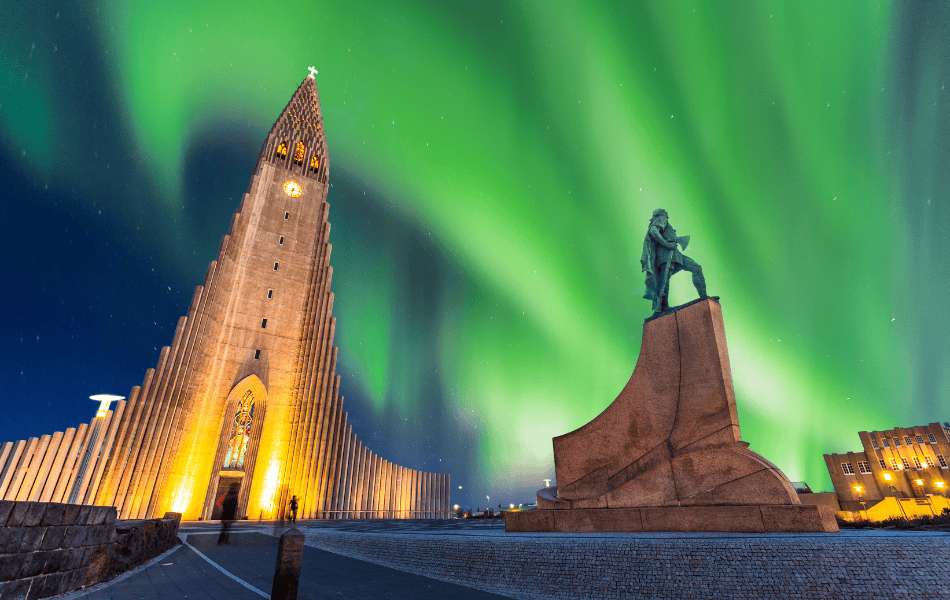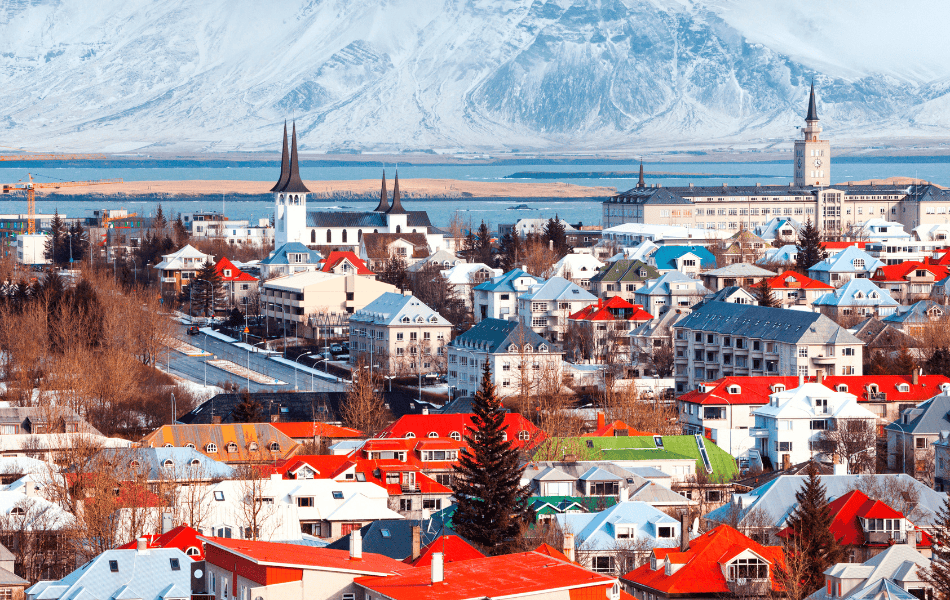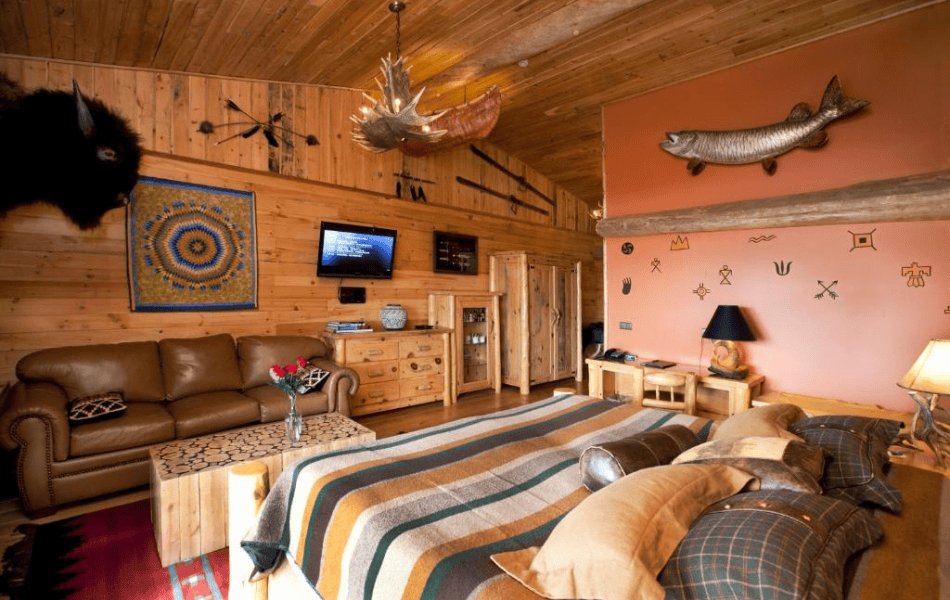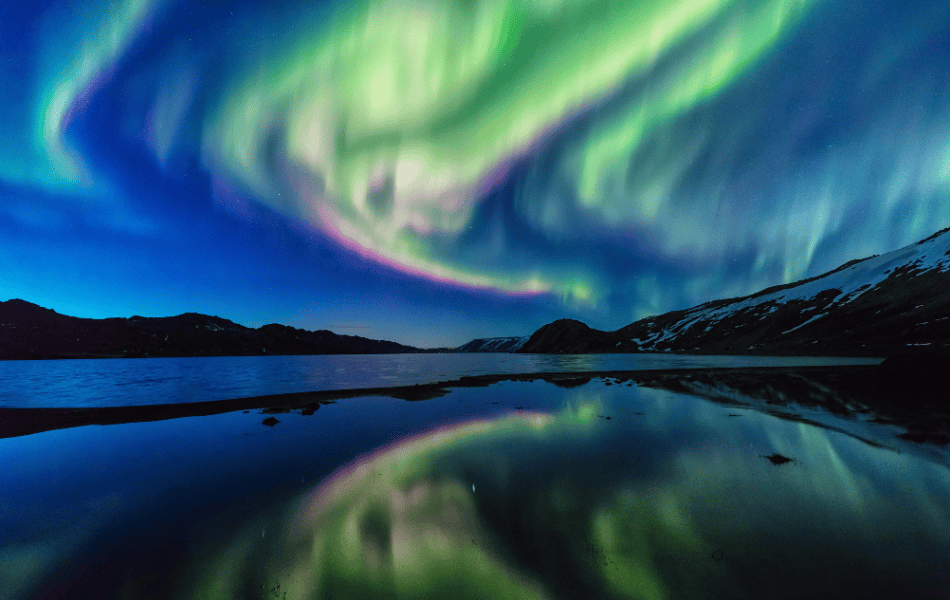Undertake an unforgettable journey to Iceland, where fire and ice collide, and unearth the secrets of its mesmerizing landscapes and rich cultural heritage.
Iceland, nestled in the North Atlantic Ocean, is a land of mystique and wonder, where the elements of fire and ice converge to create a landscape unlike any other on Earth. With its rugged terrain, steaming geysers, towering glaciers, and cascading waterfalls, Iceland is a playground for adventurers and nature enthusiasts alike.
The allure of Iceland lies in its unique geography, shaped by volcanic eruptions, glacial movements, and geothermal activity over millions of years. This island nation boasts a diverse array of landscapes, from barren lava fields to verdant valleys, from bubbling hot springs to serene fjords. It’s a place where visitors can witness the raw power of nature at every turn, where the boundaries between fantasy and reality blur amidst surreal landscapes.
In this blog, we take you on a journey to explore Iceland’s diverse landscapes, from the fiery depths of its volcanic regions to the icy expanses of its glaciers. Our focus is on immersing ourselves in the breathtaking beauty and otherworldly charm that defines this land of fire and ice.
But how do we get there?
This unique country is more accessible than ever before, thanks to its well-connected international airport in Keflavik. From major cities around the world, direct flights whisk travelers away to Reykjavik, Iceland’s vibrant capital city, where the adventure begins. Alternatively, for those seeking a more scenic route, ferry services connect Iceland with neighboring countries, offering a picturesque journey across the North Atlantic.
Whether arriving by air or sea, the journey to Iceland sets the stage for an unforgettable adventure, where every moment promises to be filled with discovery and wonder. So pack your bags, prepare to leave the familiar behind, and join us as we embark on an exploration of Iceland’s otherworldly landscapes.
Two cruise liners that offer trips to Iceland

- Norwegian Cruise Line (NCL): NCL offers various itineraries that include stops in Iceland. Their cruises typically depart from cities like Reykjavik or Akureyri and may include visits to other destinations in the North Atlantic region, such as Norway or Greenland.
- Princess Cruises: Princess Cruises also offers several itineraries that feature stops in Iceland. Their cruises often depart from ports in the United Kingdom or mainland Europe and may include visits to other destinations in the North Atlantic, such as the Faroe Islands or Scotland.
The Land of Fire: Exploring Iceland’s Volcanic Wonders

Introduction to Iceland’s volcanic activity and its impact on the landscape
Often referred to as the “Land of Fire,” owes much of its dramatic landscape to its volcanic activity. Situated atop the Mid-Atlantic Ridge, where the North American and Eurasian tectonic plates meet, Iceland is a hotspot for volcanic eruptions and geothermal phenomena. Over millennia, these volcanic forces have sculpted the island’s terrain, leaving behind a landscape that is both rugged and enchanting.
The impact of Iceland’s volcanic activity is evident everywhere you look, from the craggy peaks of its mountains to the vast expanse of its lava fields. Volcanic eruptions have not only shaped the physical features of the land but have also influenced Iceland’s culture, folklore, and way of life. The island’s inhabitants have learned to coexist with these powerful forces of nature, harnessing geothermal energy for heating and electricity and finding inspiration in the awe-inspiring beauty of their surroundings. Iceland: The Land of Fire and Ice (Travel) is a spectacular hardcover book on Iceland.
Highlights of volcanic attractions
Exploring active volcanoes
Home to some of the most active volcanoes in the world, offering visitors the opportunity to witness the raw power of nature up close. From the towering peak of Eyjafjallajökull to the fiery depths of Katla, Iceland’s volcanoes are a testament to the island’s tumultuous geologic history. Brave adventurers can embark on guided tours to explore the rugged terrain around these volcanic giants, marveling at steaming vents, bubbling mud pots, and otherworldly lava formations along the way.
Witnessing geothermal activity
One of Iceland’s most captivating features is its abundance of geothermal activity. From the steamy vents of the Reykjanes Peninsula to the bubbling hot springs of the Haukadalur Valley, geothermal phenomena are a common sight across the island. Visitors can soak in natural hot springs, bathe in geothermal pools, and even venture into geothermal caves to experience the healing powers of these ancient waters. The geothermal energy produced by Iceland’s volcanic activity also powers much of the island’s infrastructure, making it a vital part of daily life for its inhabitants.
Discovering volcanic craters and lava fields
No trip to Iceland would be complete without exploring its volcanic craters and lava fields. From the otherworldly landscapes of the Krafla Caldera to the stark beauty of the Eldhraun Lava Field, these volcanic features offer a glimpse into Iceland’s tumultuous past. Visitors can hike through barren lava fields, marvel at the colorful hues of volcanic minerals, and even venture into lava caves to explore the hidden depths of the earth. Each crater and lava field tells a story of Iceland’s volcanic history, inviting visitors to discover the mysteries of this captivating land.
The Land of Ice: Immersing in Iceland’s Glacial Marvels

While Iceland is renowned for its fiery volcanoes, it is equally famous for its icy glaciers, earning it the nickname “The Land of Ice.” These colossal ice formations cover approximately 11% of Iceland’s surface area, shaping the island’s landscape and playing a crucial role in its ecosystem. Iceland’s glaciers are not only breathtaking to behold but also hold great significance in terms of climate regulation, freshwater resources, and cultural heritage.
Glaciers in Iceland, such as Vatnajökull, Langjökull, and Snæfellsjökull, have been formed over thousands of years, sculpting deep valleys, carving out fjords, and leaving behind vast expanses of icy wilderness. These glaciers are constantly in motion, flowing imperceptibly under their own weight, and are home to a variety of unique flora and fauna adapted to the extreme conditions of their icy domain.
Highlights of glacial attractions
- Glacier hikes and ice climbing adventures
For adventurous travelers, glacier hikes and ice climbing expeditions offer a once-in-a-lifetime opportunity to explore Iceland’s glacial wonders up close. Guided tours lead visitors across pristine ice fields, through crevasses, and past towering ice formations, providing a thrilling glimpse into the heart of Iceland’s icy wilderness. Whether scaling towering ice walls or traversing frozen valleys, these excursions offer a unique perspective on the raw power and beauty of Iceland’s glaciers.
- Glacier lagoons and icebergs
Iceland’s glaciers give rise to stunning glacier lagoons, where icebergs calve off the glacier’s edge and float serenely on the surface of crystal-clear waters. One of the most famous glacier lagoons in Iceland is Jökulsárlón, located at the foot of Vatnajökull, Europe’s largest glacier. Visitors can embark on boat tours or kayak expeditions to navigate the icy waters of these glacial lagoons, marveling at the kaleidoscope of colors as sunlight dances off the shimmering icebergs.
- Ice caves exploration

During the winter months, Iceland’s glaciers reveal another hidden gem: ice caves. Formed by melting water carving intricate tunnels and chambers through the heart of the glacier, these ice caves offer a surreal and enchanting environment to explore. Guided tours lead visitors deep into the glacier’s interior, where they can marvel at the dazzling blue ice formations, sculpted by centuries of glacial movement. Exploring an ice cave is a truly magical experience, transporting visitors to a frozen world of shimmering beauty and ancient ice.
Bridging Fire and Ice: Marveling at Iceland’s Contrast
Exploration of regions where volcanic and glacial features intersect
Iceland’s landscape is woven with threads of fire and ice, where volcanic forces and glacial formations converge to create scenes of unparalleled beauty and contrast. Exploring the regions where these contrasting elements intersect offers a glimpse into the dynamic and ever-changing nature of Iceland’s wilderness. From black sand beaches framed by snow-capped mountains to geothermal hot springs nestled amidst icy landscapes, these juxtapositions of fire and ice are a testament to the island’s unique geologic history.
Highlights of contrasting landscapes
Black sand beaches juxtaposed with snowy mountains

Along Iceland’s southern coast, dramatic black sand beaches stretch as far as the eye can see, their volcanic origins evident in the dark, shimmering sand. Against this stark backdrop, snow-capped mountains rise majestically in the distance, their icy peaks contrasting sharply with the volcanic sands below. Places like Reynisfjara Beach and Vik offer stunning views of this juxtaposition, where the raw power of the Atlantic Ocean meets the frozen embrace of Iceland’s glaciers.
Hot springs surrounded by icy landscapes

The geothermal activity provides a striking contrast to its icy landscapes, with bubbling hot springs and steaming vents scattered throughout the island. One of the most famous hot spring destinations in Iceland is the Blue Lagoon, where visitors can soak in warm, mineral-rich waters while surrounded by snowy vistas. The juxtaposition of the steam rising from the hot springs against the backdrop of icy mountains creates a surreal and otherworldly atmosphere, inviting visitors to relax and rejuvenate in nature’s embrace.
Waterfalls fed by glacier meltwater and volcanic springs

Home to some of the most spectacular waterfalls in the world, many of which are fed by a combination of glacier meltwater and volcanic springs. One such example is Seljalandsfoss, where a powerful cascade of water plunges over a cliff, framed by lush greenery and towering cliffs of volcanic rock. Nearby, Skógafoss offers another breathtaking sight, its thundering waters fueled by the melting glaciers of the Eyjafjallajökull and Mýrdalsjökull ice caps. These waterfalls are not only a testament to Iceland’s natural beauty but also a reminder of the intricate interplay between fire and ice that shapes the island’s landscape.
Beyond Nature: Cultural and Historical Insights
While Iceland is renowned for its breathtaking natural beauty, it also boasts a rich cultural heritage that spans centuries of history and tradition. From its Viking roots to its modern-day society, Iceland’s cultural tapestry is woven with threads of folklore, literature, art, and cuisine. Exploring the island’s cultural and historical attractions offers visitors a deeper understanding of Iceland’s unique identity and heritage.
Highlights of cultural and historical attractions
Visiting historic landmarks and museums

There are a wealth of historic landmarks and museums that offer insight into the island’s rich history and cultural heritage. Reykjavik, Iceland’s capital city, is dotted with historic sites such as the iconic Hallgrímskirkja church, Harpa Concert Hall, and the Parliament House. Visitors can also explore museums such as the National Museum of Iceland and the Reykjavik Art Museum, which showcase Iceland’s art, history, and culture through exhibits and artifacts.
Outside of Reykjavik, Iceland’s countryside is dotted with historic landmarks such as ancient Viking settlements, medieval churches, and archaeological sites. Places like Þingvellir National Park, home to the historic Alþingi (Icelandic Parliament), offer visitors the opportunity to step back in time and experience Iceland’s ancient heritage firsthand.
Exploring traditional Icelandic cuisine and folklore
Their cuisine is as diverse and unique as the landscape itself, with traditional dishes that reflect the island’s maritime heritage and rural way of life. Visitors can sample local delicacies such as fermented shark (hákarl), smoked lamb (hangikjöt), and Icelandic skyr, a type of yogurt that has been a staple of the Icelandic diet for centuries.
In addition to its culinary traditions, Iceland is also steeped in folklore and mythology, with tales of trolls, elves, and other supernatural beings woven into the fabric of Icelandic culture. Visitors can learn about Icelandic folklore through storytelling sessions, guided tours, and visits to museums such as the Icelandic Elf School in Reykjavik.
Experiencing local festivals and events
Throughout the year, Iceland hosts a variety of festivals and events that celebrate its culture, heritage, and traditions. From the colorful festivities of Þorrablót, a midwinter festival that celebrates Icelandic food and drink, to the lively music and arts scene of the Reykjavik Arts Festival, there is always something happening in Iceland to delight and inspire visitors.
Other notable events include the Reykjavik Pride Parade, and the Icelandic Independence Day celebrations on June 17th, commemorating Iceland’s independence from Denmark in 1944. Whether attending a traditional Icelandic wedding, a local folk festival, or a contemporary art exhibition, experiencing Iceland’s vibrant cultural scene is an essential part of any visit to the island.
Practical Tips for Exploring Iceland

Essential travel tips for visiting Iceland
Visiting Iceland is an adventure unlike any other, but it’s essential to be prepared for the unique challenges and opportunities that come with exploring this remote island nation. Here are some essential travel tips to help you make the most of your Icelandic adventure.
- Weather: Iceland’s weather can be unpredictable, with rapid changes in conditions throughout the day. Be sure to dress in layers and pack waterproof clothing to stay comfortable in any weather.
- Currency: The currency in Iceland is the Icelandic króna (ISK). While credit cards are widely accepted, it’s a good idea to carry some cash for smaller purchases and transactions.
- Safety: Iceland is known for its natural beauty, but it can also present hazards such as rough terrain, strong winds, and rapidly changing weather. Always follow safety guidelines and heed warning signs when exploring outdoor attractions.
- Driving: If you plan to rent a car and explore Iceland’s scenic landscapes, be sure to familiarize yourself with local driving laws and road conditions. Many roads in rural areas are unpaved, so a 4WD vehicle may be necessary for certain routes.
- Respect nature: Iceland’s pristine environment is fragile and easily damaged by human activity. Respect local wildlife and natural habitats, and follow Leave No Trace principles to minimize your impact on the environment.
Packing essentials for diverse weather conditions
The climate can vary greatly depending on the season and region, so it’s important to pack appropriately for your trip. Here are some essential items to include in your packing list.
- Waterproof jacket and pants: Keep dry and protected from the elements with a sturdy waterproof jacket and pants.
- Warm layers: Pack thermal underwear, fleece jackets, and wool sweaters to stay warm in Iceland’s chilly climate.
- Sturdy footwear: Comfortable, waterproof hiking boots are essential for exploring Iceland’s rugged terrain.
- Gloves, hat, and scarf: Protect yourself from the cold with insulated gloves, a warm hat, and a cozy scarf.
- Swimsuit and towel: Don’t forget to pack a swimsuit and towel for soaking in Iceland’s geothermal hot springs and swimming pools.
Advice on transportation and accommodation options
Getting around Iceland can be challenging due to its remote location and rugged terrain, but there are several transportation and accommodation options to choose from.
- Rental car: Renting a car is one of the most popular ways to explore Iceland, giving you the freedom to travel at your own pace and explore off-the-beaten-path destinations.
- Public transportation: Iceland has a network of buses that connect major cities and towns, making it possible to explore the island without a car. However, services may be limited in rural areas, so plan your itinerary accordingly.
- Tours: Guided tours are a convenient option for exploring Iceland’s top attractions, especially if you prefer not to drive yourself. From glacier hikes to Northern Lights tours, there are tours available for every interest and budget.
- Accommodation: Iceland offers a range of accommodation options, from luxury hotels and boutique guesthouses to budget-friendly hostels and campsites. Book your accommodation in advance, especially during peak tourist seasons, to ensure availability.
Five Accommodation Options in Iceland

- Fosshotel Glacier Lagoon: Located near the famous Jökulsárlón Glacier Lagoon in southeast Iceland, this hotel offers modern accommodations with stunning views of the surrounding glaciers.
- Hotel Rangá: Situated in the countryside near Hella, Hotel Rangá is known for its luxurious amenities and excellent service. It’s also one of the best places in Iceland for viewing the Northern Lights.
- Ion Adventure Hotel: Nestled in the countryside near Thingvellir National Park, Ion Adventure Hotel offers a unique blend of luxury and adventure, with sleek, modern accommodations and easy access to outdoor activities like hiking and horseback riding.
- Silica Hotel: Located in the heart of Iceland’s famed Blue Lagoon, Silica Hotel offers comfortable accommodations with direct access to the geothermal spa. Guests can enjoy soaking in the mineral-rich waters while surrounded by stunning natural beauty.
- Hotel Borg by Keahotels: Situated in downtown Reykjavik, Hotel Borg offers elegant accommodations in a historic building dating back to 1930. Guests can enjoy luxurious amenities and easy access to the city’s cultural attractions, restaurants, and nightlife.
Conclusion

Iceland’s allure lies not only in its stunning natural landscapes but also in its rich cultural heritage and unique blend of fire and ice. Whether exploring volcanic wonders, glacial marvels, or immersing in local traditions, Iceland promises an unforgettable journey of discovery and wonder.
| LIKE this blog and SUBSCRIBE for more captivating adventures and travel insights! |
Questions Often Asked
“When is the best time to visit Iceland?” – The best time to visit Iceland is during the summer months (June to August) for milder weather and longer daylight hours.
“What are the Aurora Borealis viewing conditions in Iceland?” – The Aurora Borealis can be seen in Iceland from late August to mid-April, with peak viewing opportunities during the winter months.
“Are there any active volcanoes erupting in Iceland right now?” – As of now, there are no active volcanoes erupting in Iceland.
“How much does it cost to visit Iceland?” – The cost of visiting Iceland varies depending on factors like accommodation, transportation, and activities, but budgeting around $200-$300 per day per person is a good estimate.
“What are some must-see attractions in Iceland beyond the typical tourist spots?” – Some must-see attractions in Iceland beyond the typical tourist spots include Landmannalaugar, the Westfjords, and the remote Hornstrandir Nature Reserve.
Recent Posts
Discover insider tips to find cheap flights from the UK, save on easyJet, Ryanair & BA, and score the best weekend and last-minute deals. Why You’re Paying Too Much for Flights Most UK...
Discover the sounds of travel, from laughing kookaburras to market chatter, church bells to ocean waves - a journey heard as much as seen. It always starts with a sound. The other day, walking...

